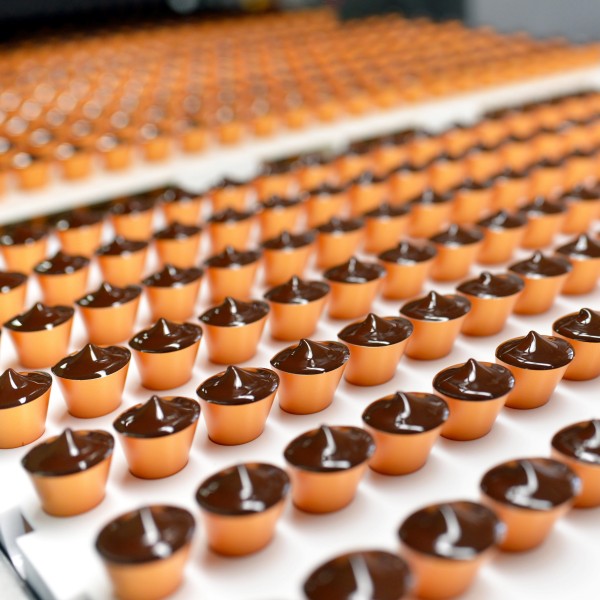By Jessica Exley, Donaldson Process Filtration
Food and beverage processors in the United States and abroad operate under some of the most stringent standards relating to food safety. The Food and Drug Administration (FDA), International Featured Standards (IFS), Safe Quality Foods (SQF), British Retail Consortium (BRC), and 3-A Sanitary Standards, Inc. (3-A), respectively, all set forth standards that must be met at the risk of production shut down.
Two areas of increased evaluation are the use of sterile compressed air and culinary steam in the food processing industry. While the language surrounding the various standards differs slightly—at its core—it's about protecting manufacturers and consumers.
Understanding and navigating industry standards means understanding the roles of compressed air and culinary steam in the industry and your facility.
Sterile Compressed Air: 3-Stage Filtration
High Purity compressed air is an indispensable part of the food manufacturing process, because it is used as an ingredient, touched food product being stored under positive pressure (to prevent the ingress of contaminants), pumping viscous products through pipelines, bagging or packing products, rejecting sub-standard products from conveyors, and blowing food and other debris off work surfaces and production equipment.
Unfiltered compressed air contains particulates, oil and water aerosols, and bio-burden. These undesirable contaminants must be removed from the manufacturing process in order to ensure product safety and consistency. So, what can be done to filter compressed air?
Years of engineering and testing have shown that a three-stage filtration system is ideal for producing high-purity compressed air on demand at the various points-of-use. The three-stage system is able to provide the removal efficiencies required in the industry while minimizing the change out frequency of the more expensive sterile filter. (See Illustration A.)

Filter #1 should be composed of relatively open or “loose” media. This configuration allows for the removal of large amounts of water and rust that typically contaminates the lines after refrigerated drying equipment. The open media prevents the filter from becoming blocked too quickly. Higher-end filters will use a binderfree fibrous media that is both hydrophobic and oleophobic. This allows the filter to quickly shed water and produce high flow rates at a lower pressure loss, minimizing energy consumption.
Filter #2 should remove all remaining water and oil aerosols as well as any particles that may have penetrated the first filter. Because the second filter needs to have greater capture efficiency than the first filter, the ideal filter should incorporate a pleated media structure. A pleated structure produces greater media surface area, which reduces the pressure loss and increases service life by providing more dirt holding area than non-pleated media.
Filter #3 is designed to capture microorganisms and reliably withstand the extreme conditions of steam sterilization. Filtration media made of PTFE membrane or borosilicate is often the best choice because it is highly resistant to steam and can be very tightly controlled to produce a bacterial-retentive structure that remains effective over the entire service life. Since this filter should not encounter any dirt or oil, choose a version that can tolerate a high number of sterilization cycles. This filter should be rated at >99.9999998% at 0.2 microns because this the size particle is the most challenging to capture.
Culinary Steam: 2-Stage Filtration
In the food-processing industry, culinary steam is direct injected into food for cooking or used indirectly to clean and sterilize vats, mixers, conveyors, and other equipment used in the food-production process. Culinary steam is defined by 3-A Accepted Practice 609-03 as “steam that is free of entrained contaminants... and is suitable for use in direct contact with food products, other comestibles, and product-contact surfaces.”
The primary safety concern is that un-filtered steam can contain contaminants including rust and dirt that could end up in the food product. Unfortunately, a major source of contamination is often the steamgeneration process itself, especially in systems where excess steam is condensed, recirculated, and reused in the process. This “recirculated condensate” can be contaminated with pipe scale and suspended solids, as well as oils and metallic debris shed by the pumps in the recirculating system. If the steam is not filtered before use, these contaminants can make their way into the food product. So, what can be done to generate culinary steam?

There are two critical stages of a culinary steam filtration system: a final culinary steam filter in addition to a pre-filter or entrainment separator. (See Illustration B.) Point-of-use filter housings designed with stainless steel, free from imperfections such as pits and crevices, is ideal for producing culinary steam. Culinary steam filtration should be installed at all points-of-use because any piping downstream of your final filter could create additional opportunities for contaminants to enter the system.
Filter #1, often referred to as the steam pre-filter or an entrainment separator, should effectively remove all particulates 10 microns in size or larger from the production line’s incoming steam source.
Filter #2, identified as the point-of-use culinary steam filter, should remove 95% of particulates 2 microns in size and larger.
Additionally, filtering your culinary steam will significantly reduce your plant maintenance costs. Unfiltered steam can coat heat exchangers producing an undesirable insulating effect which can slow heat transfer and increase production times. The proper filtration system will also remove dirt, rush and scale that can abrade pumps, valves and other hardware causing premature equipment failure.
As interest over consumer and product safety standards continue to grow, food and beverage manufacturers around the globe can expect increased attention on the food safety standards and processes within each facility. Protecting your customers—and your business—by verifying that your production processes are in compliance with current regulations will help mitigate those concerns.
If you’re not sure whether your current compressed air or culinary steam filtration system meets the latest standards, contact a filtration consultant specialized in serving food and beverage processors, such as Donaldson. They can help identify old, aging, or sub-standard systems, and install a sterile compressed air or culinary steam system that will ensure you’re meeting all relevant standards.
Many factors beyond the control of Donaldson can affect the use and performance of Donaldson products in a particular application, including the conditions under which the product is used. Since these factors are uniquely within the user’s knowledge and control, it is essential the user evaluate the products to determine whether the product is fit for the particular purpose and suitable for the user’s application. All products, product specifications, availability and data are subject to change without notice, and may vary by region or country.




